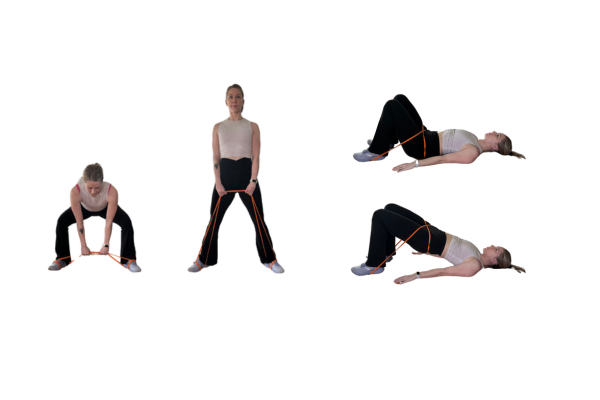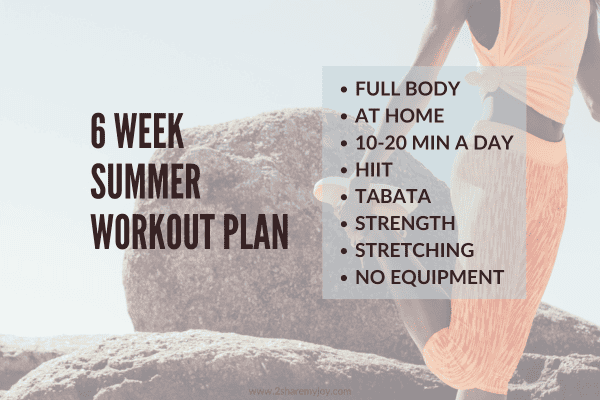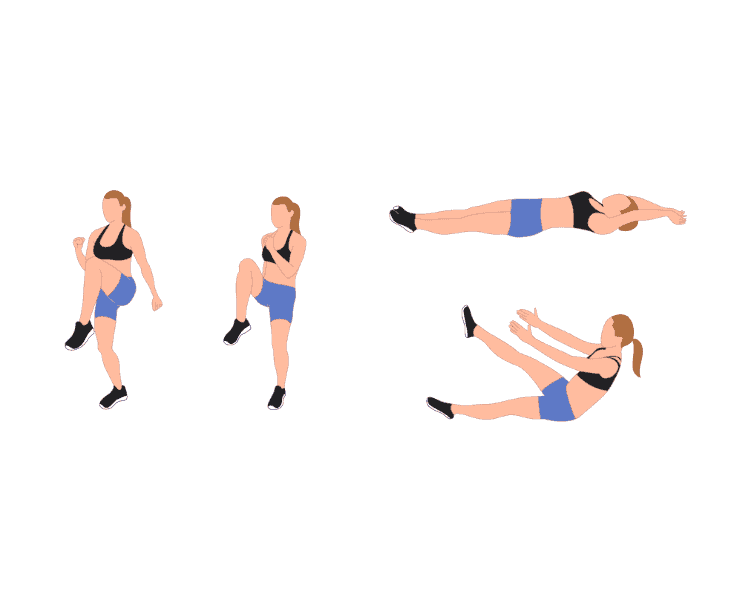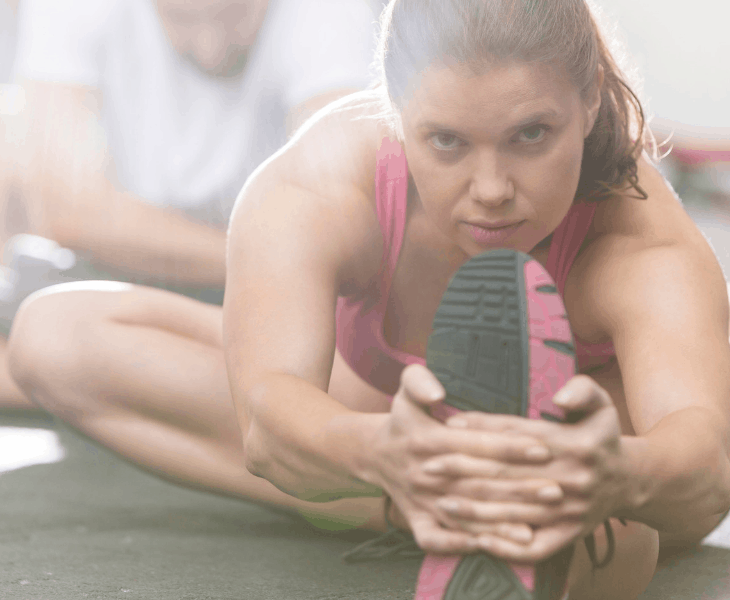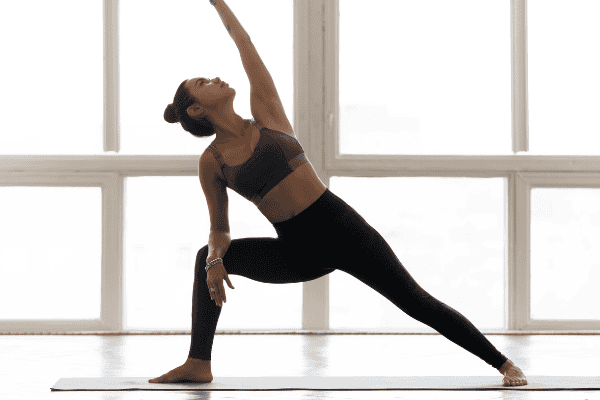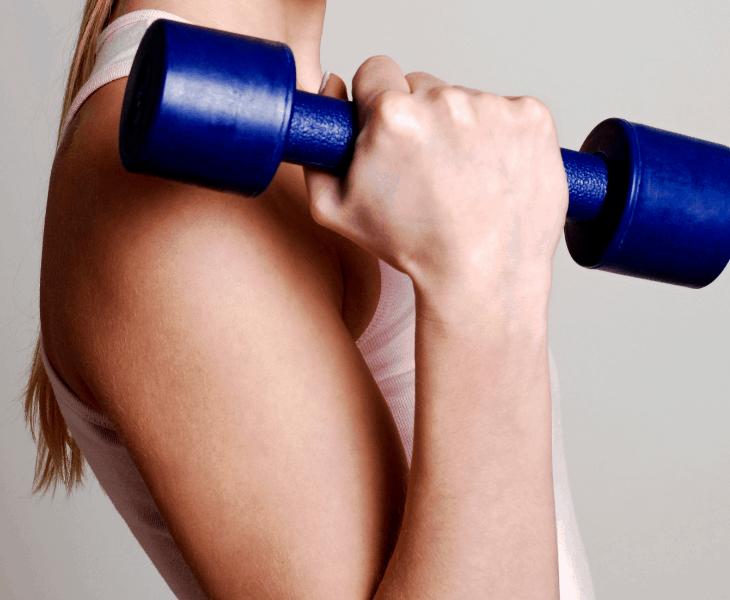Workout for Obese Beginners (Low Impact)
Starting a workout for obese beginners might seem like a daunting task, but with the right guidance and a focus on safety, it’s not only achievable but also highly beneficial for your health.
In this comprehensive guide, I will walk you through the essential steps and exercises to help you start exercising effectively and safely as an obese individual.
Whether you’re looking to lose weight, improve your overall health, or enhance your fitness, this guide will provide you with the knowledge and motivation to get started on the path to a healthier you.
We’ll cover everything from consulting with healthcare professionals to choosing suitable exercises, and even provide you with workout routines designed specifically for obese beginners, both at home and in the gym.
So, let’s take the first step together on this transformative journey towards a fitter, healthier you.
How should an obese person start exercising?
A person with obesity can start exercising with careful planning and consideration of your current fitness level and any underlying health issues. Here are some steps and guidelines for an obese person to begin exercising safely and effectively:
Consult with a healthcare professional: Before starting any exercise program, it’s essential to consult with your healthcare provider, especially if you have any underlying medical conditions or concerns.
They can provide guidance on safe exercise and help you set realistic goals.
Start with a fitness assessment: A certified personal trainer can conduct a fitness assessment to determine your current fitness level, range of motion, and any physical limitations.
This assessment will help create a personalized exercise plan tailored to your needs.
Choose low-impact activities: For individuals who are obese, low-impact exercises are often a good place to start.
These activities are easier on the joints and reduce the risk of injury. Some options include walking, swimming, cycling, and water aerobics.
Begin with short sessions: Start with short exercise sessions, such as 10-15 minutes, and gradually increase the duration as your fitness level improves.
Consistency is more important than intensity at the beginning.
Include strength training: Building muscle can help with posture and metabolic health. A great way to start is doing body weight exercises or using resistance bands. My beginner program is perfect for this!
Pay attention to proper form: Learning and maintaining proper form during exercises is crucial to prevent injury.
Consider working with a certified personal trainer or physical therapist to ensure you are performing exercises correctly.
Listen to your body: Be mindful of how your body feels during and after exercise.
If you experience pain, discomfort, or dizziness, stop exercising and consult with a healthcare professional or fitness expert.
Set realistic goals: Establish achievable goals for your fitness journey. These goals should be specific, measurable, achievable, and time-bound.
Celebrate your progress along the way to stay motivated.
Remember that every individual is unique, and what works for one person may not work for another. It’s crucial to work closely with healthcare professionals and fitness experts to design an exercise plan that suits your specific needs and helps you achieve your weight loss and overall health goals safely.
How to start working out at 300 lbs.?
Starting a workout routine when you weigh 300 pounds or more requires special attention to safety and sustainability. It is important to get cleared by your physician and also ask for any exercise restrictions.
Typically it is best to begin with simple movements like walking or seated exercises. Low-impact exercises are easier on your joints.
Consider activities like walking, swimming, cycling, or using an elliptical machine. Swimming and cycling will decrease joint stress.
Water aerobics can also be an excellent choice because it provides buoyancy and reduces joint impact. Start with simple goals like walking for 10 minutes a day and gradually work your way up.
Incorporate strength training into your routine to build lean muscle mass, boost metabolism, and improve overall strength.
Start with bodyweight exercises like wall sits, ball squats, and modified wall push-ups. Check out these best wall exercises for abs.
Should obese people lift or do cardio?
There are many benefits of lifting weights and doing cardio. Including these into your workout routine should be the long term goal. However, you may have to slowly ease into these exercises.
It is important to perform basic movements properly before adding weights to them. Basic movements are: pushing, pulling, pressing, squatting, and hinging.
You can perform these with body weight and resistance bands first to practice proper form, then slowly add weights to them.
Dumbbells, cables, or exercise tubing exercises work quite well for obese beginners to start a weight lifting training routine.
You also want to make sure to correct any muscle imbalance and work on your balance before starting to lift weights.
For cardio, walking is enough to start out. You can start by walking 5 minutes and see how you feel. Then increase the time weekly.
Other cardio options like swimming may be better for your joints.
What exercises should obese people avoid?
Obese people should avoid any exercise that would lead to injury or overtraining. This goes for any person that is exercising. It depends on your current level of fitness.
Obese individuals should definitely avoid exercises that have been restricted by their physician. Restrictions for obese individuals may be necessary, depending on any underlying health conditions, which should be determined by their healthcare provider.
Whether or not obese people should do exercises on the floor depends on the individual. Doing standing or bench exercises to start out may be a more comfortable option.
Exercises for Obese Beginners at Home
You can choose between your gym or your home to perform these workouts for obese beginners.
The exercises are excellent for individuals who are deconditioned, regardless of their weight. Any novice to exercise can begin with these workouts.
These exercises, tailored for obese beginners, are designed to practice basic movement patterns and improve balance. This focus is important to minimizing the risk of injury. It establishes a solid foundation to build upon.
As a personal trainer, I prefer to start with this type of stabilization endurance training for any exercise beginner.
Workout for Obese Beginners
Warm-Up
The war up consists of stretching and cardio. Flexibility techniques are important to enhance joint range of motion, improve tissue extensibility, and correct muscle imbalances.
The warm-up period helps increase heart and respiration rates, increase tissue temperature, and psychologically prepare you for higher training intensities (source).
To warm up start with 3 static stretches and then move on to cardio. The static stretches are stretches that are held for 30 seconds and I usually target 1-3 overactive muscles.
Now choose a form of cardio like walking, the elliptical trainer, or bike and warm up for 5 minutes.
Next Step in the Obese Beginner Workout plan: Activation
Activation includes low-intensity core and balance exercises. Core training is critical for improving posture (source) and help prevent injuries (source), therefore it is a must for any beginner workout plan.
Balance training is an important component of injury prevention programs as well and has been proven to help reduce the incidence of lower extremity injuries like ankle sprains and ACL tears (source).
Pick 1-2 core exercises and 1-2 balance exercises. These exercises are listed from easy to more challenging. So pick whichever you feel comfortable doing, then work yourself through the list.
Obese Beginner Core Exercises:
- Incline plank (on box/bench/wall)
- Paloff press (resistance band or cable machine)
- floor bridge (only of comfortable being on the floor)
- floor cobra (only of comfortable being on the floor)
- Ball bridge
- Ball cobra
- Bird dog
- Plank and side plank hold for 30 seconds
Do these core exercises slowly. 1×15 the first week, then1x16 the next week. Then move on to more challenging exercises.
Obese Beginner Balance Exercises:
- Single leg balance
- Single leg balance reach
- Single leg hip rotation
- Single leg lift and chop
- Single leg arm and leg motion
Perform each exercises slowly with 15 reps (or 7-8 each side). The following week increase to 16 reps (8 each side), then 2×16 in week 3.
You can also add this plyo exercise to your routine after week 3: Squat Jump with Stabilization (Hold landing 3-5 sec, 1×8).
Resistance Training for Obese Beginners
It is important for any exercise beginner to practice proper form and basic movements like pushing, pulling, squatting, hinging, and pressing.
These movements are crucial to practice because they are movements from our daily lives.
Incorporating these basic movements into your workout routine (and executing them with proper form) can help prevent injuries when performing them in your daily life.
For example, the squat and hinge movements are helpful when picking up objects in your household.
Pick one exercise from each movement pattern below. They are listed from easy to challenging. Pick the one you feel most comfortable doing and have the equipment to do so.
Perform each exercise 1×20 the first week, then 2×12 the following week, and 2×15 the third week. You can then add more challenging exercises to your routine.
Squat: Ball squat, Bodyweight Squat, Step-Up to Balance, Lunge to Balance
Hinge: Good Mornings, Romanian Deadlift (bodyweight), Romanian Deadlift (light weight)
Push: Incline Push ups, Standing Tubing Chest Press, Push-up
Pull: Standing Tubing Row, Standing Cable Row
Press Pattern: Standing Tubing Shoulder Press, Standing Dumbbell Shoulder Press, Suspension Chest Press, Standing Cable Chest Press
Total Body (optional after week 2): Ball Squat and Curl to Press, Step-up-Balance-Curl to Press
Cool Down
Optional cardio: You can do another 5 minute of light cardio to cool down. This would be the same as the warm up.
Static stretching: Stretch each worked muscle for 30 seconds.
Workout For Obese Beginners Routine Examples
If you are still not sure what to do, follow these premade workouts for obese beginners at home. You can do these at home or in the gym. There are 3 Levels you can choose from.
You can follow along this workout in my app. It is video guided and progressive functional fitness program for any exercise beginners. You can even set reminders and have access to 1000s of other workout programs.
Level 1 Workout for Obese Beginners:
Step 1: Stretch and do 5 minutes of cardio (your choice)
Step 2: Single leg balance (16 seconds each leg)
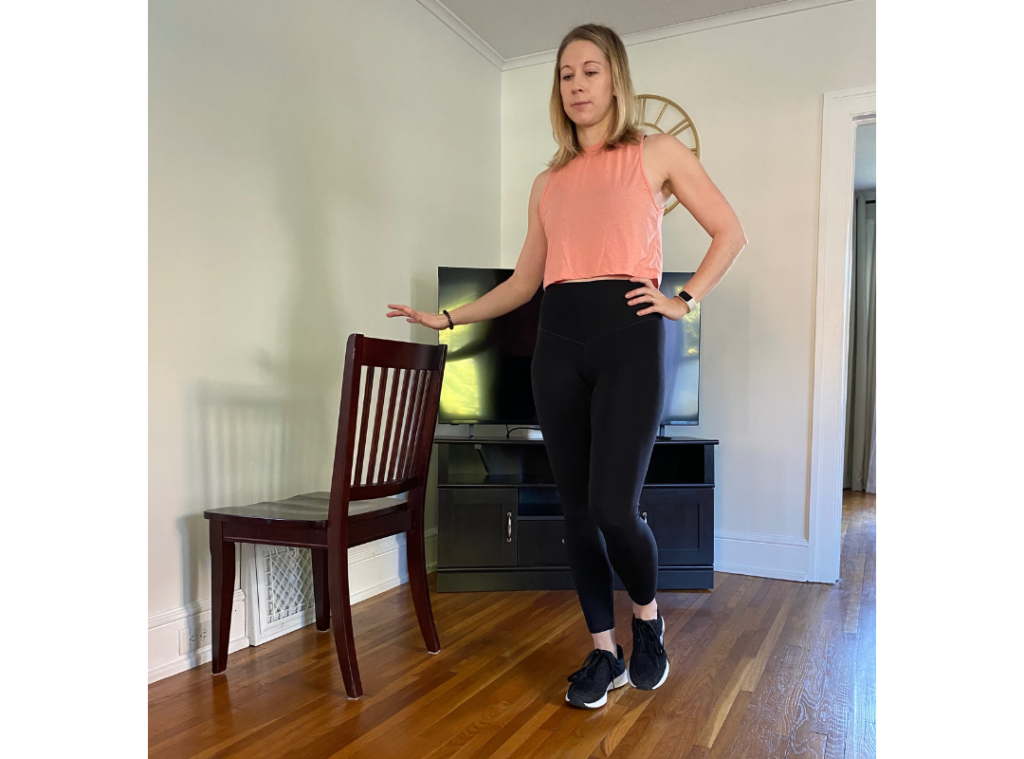
Step 3: Incline plank on a sturdy chair or bench (hold 15-30 seconds)

Step #4: Ball wall squat (20 reps)

Step #5: Bodyweight Good Mornings (20 reps)

Step #6: Wall push ups (20 reps)

Step #7: Standing tubing row (20 reps)

Step #8: Standing tubing shoulder press (20 reps)

Step #9: 5 minute cardio cool down and stretch
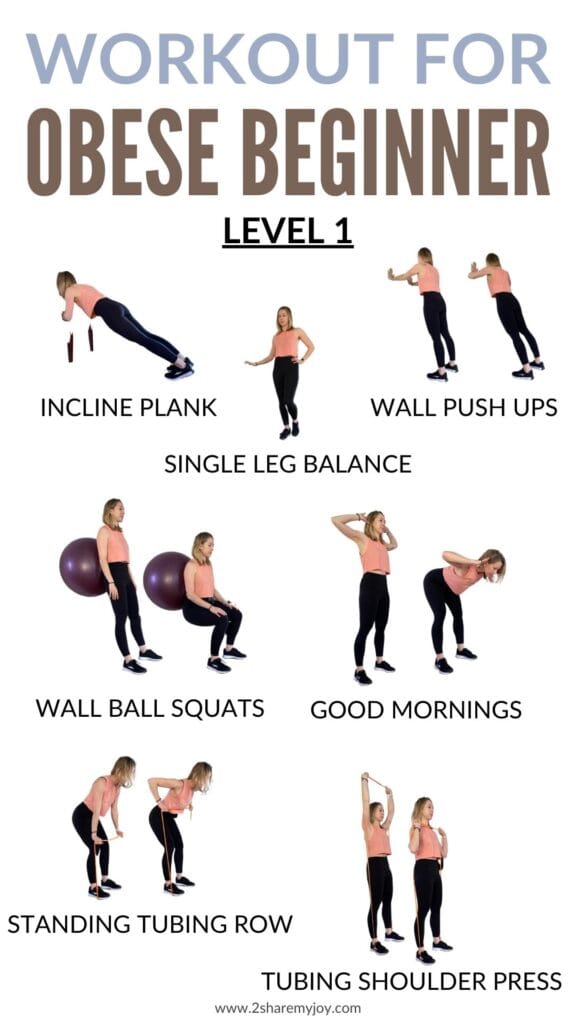
Level 2 Workout for Obese Beginners:
Step #1: Stretch and do 5 minutes of cardio (your choice)
Step #2: Single leg balance reach (8 each side)

Step #3: Paloff press resistance band (8-10 each side)

Step #4: Bodyweight squat (20 reps)

Step #5: Bodyweight Romanian deadlift (20 reps)

Step #6: Standing tubing chest press (20 reps)

Step #7: Standing tubing row (20 reps)

Step #8: Standing tubing shoulder press (20 reps)

Step #9: 5 minute cardio cool down and stretch
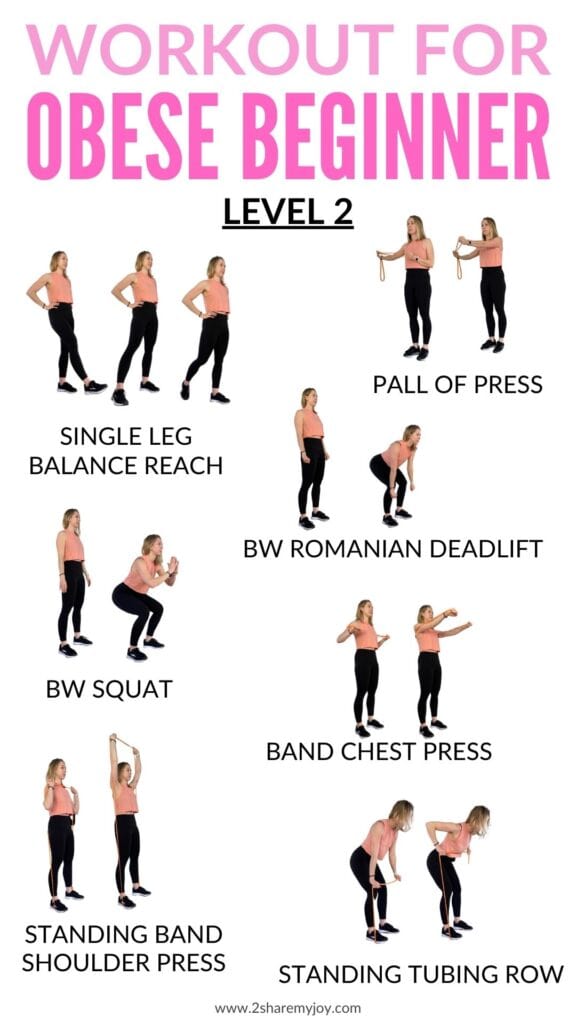
Level 3 Workout for Obese Beginners:
Step #1: Stretch and do 5 minutes of cardio (your choice)
Step #2: Single-leg hip rotation (8 per side)
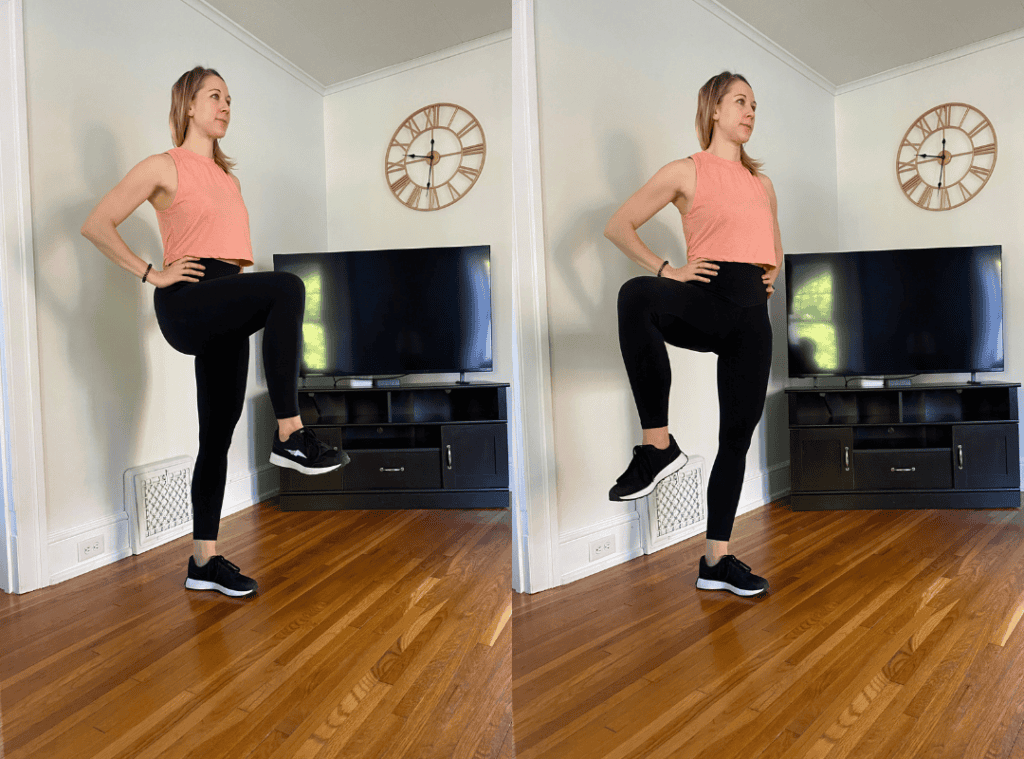
Step #3: Ball bridge (20 reps)

Step #4: Lunge to balance (hold and balance for 3 seconds) (20 reps)

Step #5: Incline push-ups (or modified floor push up) (20 reps)

Step #6: Romanian deadlift (bodyweight or light weight) (20 reps)

Step#7: Standing tubing row (20 reps)

Step #8: Standing tubing shoulder press (20 reps)

Step #9: 5 minute cardio cool down and stretch
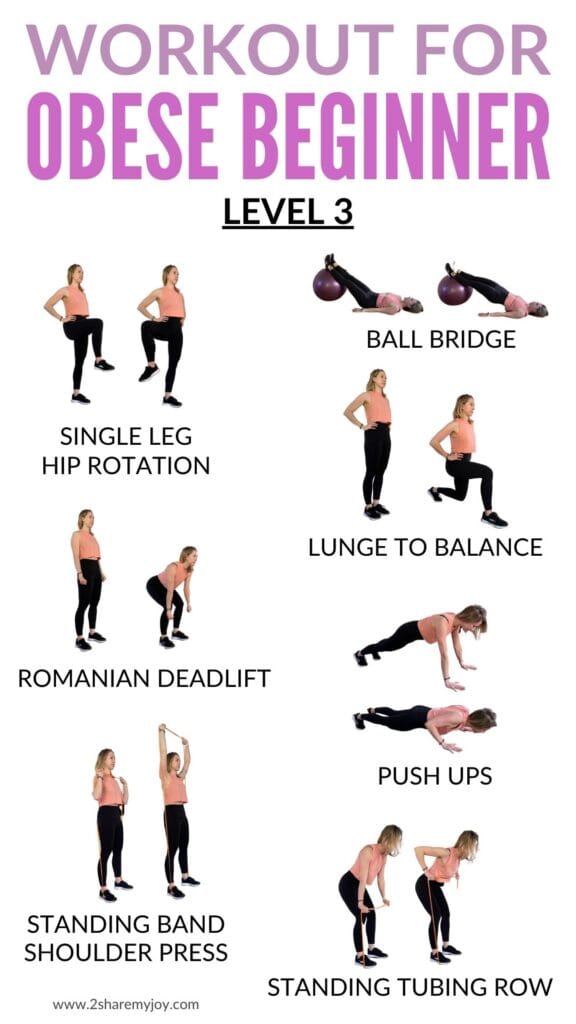
After all three levels of the workout for obese beginners are complete you can add dumbbells or more cable machine exercises to increase resistance.
Do You Have to Go to the Gym to Get Fit?
No, you do not have to go to the gym to get fit. While the gym can be a convenient and effective place to work on your fitness goals, there are many other ways to achieve and maintain fitness without setting foot in a gym.
You can find plenty of free beginner home workouts on the internet and various apps.
The key to getting fit is consistency and finding an approach that you enjoy and can stick with over the long term.
Ultimately, the best fitness routine is one that aligns with your goals, preferences, and lifestyle, whether or not it involves going to the gym.
Obese Beginner Exercises for Knee and Back pain
If you are a obese exercise beginner and suffer from knee and back pain (or just one of these), be sure to consult your health care professional before starting any exercise.
Stop the exercises if you experience a pain flare up and do not exercise through pain.
If you have been doing physical therapy, it is a good idea to keep doing these exercises and add one new exercise at a time to your workout.
Big 3 Exercises for Back Pain
- Modified Curl Up
- Side Plank
- Quadruped Bird Dog
Once you master these exercises you can add “Stir the Pot” .
Obese Beginner Exercises for Knee Pain
- Wall slides
- Ball bridge
- Side band wall
- Step up to balance
You can also consider any chair exercises, yoga, water exercises, or cycling.

